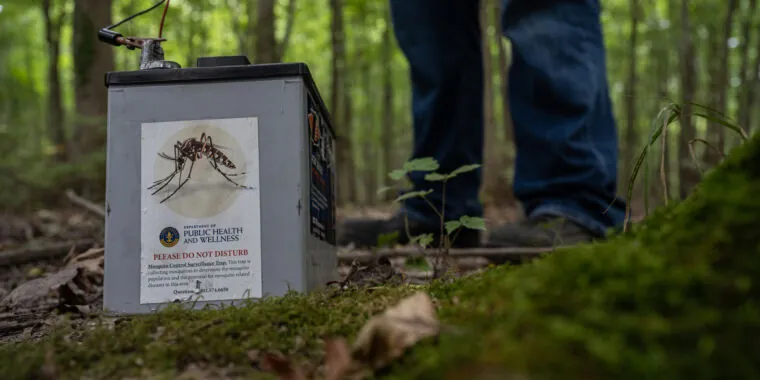
Alarming Surge of Deadly EEE Virus Spikes in New York: One Fatality Confirmed and Health Officials on Alert!
2024-09-25
Author: Ying
In a concerning development, New York is grappling with a significant outbreak of the eastern equine encephalitis (EEE) virus, which has already resulted in one tragic death and prompted state officials to declare an "imminent threat" to public health. State Health Commissioner James McDonald revealed that while New York typically sees EEE-positive mosquitoes in only two or three counties annually, this year has seen a staggering rise, with 15 counties now reporting infections.
"This year, eastern equine encephalitis is more prevalent and deadly," McDonald stated. The EEE infection bears a chilling mortality rate between 30 and 50 percent, marking it as a serious health threat instead of a mere nuisance. He encouraged all New Yorkers to take precautions by using insect repellent, dressing in long sleeves, and eliminating standing water around their homes—especially since mosquitoes can remain active until the first frosts of fall.
The recent declaration from McDonald coincided with the reporting of a New Yorker’s death attributed to EEE, confirmed on September 20 in Ulster County. This case marks the state’s first reported EEE incidence since 2015. To contextualize the rarity of this disease, between 1971 and 2024, New York recorded only 12 EEE cases, seven of which were fatal.
The Harsh Reality of EEE
EEE remains a rare occurrence in the United States, with an average of just 11 cases each year, according to the Centers for Disease Control and Prevention (CDC). The virus primarily infects wild birds and is transmitted to humans and animals through mosquito bites. Horses are particularly vulnerable, with mortality rates soaring up to 90%. For humans, it’s estimated that only about 4-5% of those bitten by an EEE-carrying mosquito will develop the disease, with many individuals remaining asymptomatic.
Those who do contract EEE may initially experience vague symptoms such as fever, headache, malaise, chills, joint pain, nausea, and vomiting. However, the situation can escalate to inflammation of the brain, leading to neurological complications like seizures and altered mental states. Children under 15 and adults over 50 are at heightened risk.
The CDC reports that approximately 30% of individuals who develop severe EEE cases succumb to the disease, yet the mortality rate can vary significantly based on geography. In Massachusetts, for example, about 50% of EEE cases have been fatal. Survivors of neuro-invasive disease often suffer from severe long-term disabilities, with some facing life-threatening complications a few years down the line. Regrettably, no vaccine or specific treatment exists for this dangerous virus.
Nationwide Snapshot
While New York is witnessing an unusual surge in EEE-positive mosquitoes, the national situation appears relatively stable, with only ten cases reported from six states this year. This count does not include the New York case, which would raise the total to 11—aligning with the nationwide annual average.
Beyond New York, EEE cases have also been confirmed in Massachusetts, Vermont, New Jersey, Rhode Island, Wisconsin, and New Hampshire, with most cases emerging in the Northeast, primarily from mid-June to early October, before the onset of freezing temperatures that curb mosquito numbers.
The recent fatality in New York echoes a similar case in New Hampshire earlier this year, where a previously healthy 41-year-old man died from EEE—underscoring the dangerous potential of this virus.
Last month, concerns reached a heightened level when a small town in Massachusetts urged residents to observe an evening curfew to minimize mosquito exposure after a significant increase in reported cases.
As New Yorkers continue to prepare for a potential escalation of this outbreak, health officials recommend staying vigilant, implementing mosquito control measures, and remaining informed about this viral threat.


 Brasil (PT)
Brasil (PT)
 Canada (EN)
Canada (EN)
 Chile (ES)
Chile (ES)
 España (ES)
España (ES)
 France (FR)
France (FR)
 Hong Kong (EN)
Hong Kong (EN)
 Italia (IT)
Italia (IT)
 日本 (JA)
日本 (JA)
 Magyarország (HU)
Magyarország (HU)
 Norge (NO)
Norge (NO)
 Polska (PL)
Polska (PL)
 Schweiz (DE)
Schweiz (DE)
 Singapore (EN)
Singapore (EN)
 Sverige (SV)
Sverige (SV)
 Suomi (FI)
Suomi (FI)
 Türkiye (TR)
Türkiye (TR)